Spring/Fall (oct-Nov / March- April) is The Best Time to Visit Zion National Park
Zion National Park, with its stunning red rock formations, deep canyons, and diverse wildlife, is a must-visit destination for nature enthusiasts and adventure seekers alike. However, choosing the best time to experience this natural wonder can significantly impact your visit. In this comprehensive guide, we’ll explore the optimal times to visit Zion National Park throughout the year, considering various factors such as weather, crowds, activities, and more.
Table of Contents
Which is The Best Time To Visit Zion National Park

Zion National Park, located in southwestern Utah, is renowned for its amazing landscapes and abundant recreational opportunities. From towering sandstone cliffs to lush forests and cascading waterfalls, the park offers multiple experiences for visitors to enjoy. However, planning the perfect trip requires careful consideration of several factors, including the time of year.
Related Article: Nature’s Canvas: Best National Park To Visit In April
Zion National Park in Spring
Springtime at Zion National Park is a magical season characterized by mild temperatures, colorful wildflowers, and the rejuvenating rush of waterfalls. As the winter chill fades away, the park bursts to life with a vibrant display of nature’s beauty. Picture yourself strolling along lush trails adorned with blooming flowers, while the melodious sounds of chirping birds fill the air.
The mild weather during spring makes it an ideal time for outdoor activities such as hiking and wildlife viewing. With temperatures just right, you can comfortably explore the park’s diverse landscapes without the discomfort of extreme heat or cold. Additionally, the wildlife becomes more active during this time, offering ample opportunities to spot elusive creatures in their natural habitat.
One of the greatest advantages of visiting Zion National Park in spring is the relatively smaller crowds compared to the bustling summer months. With fewer people around, you’ll have more space to roam freely and immerse yourself in the peacefulness of nature. Whether you’re seeking solitude on a secluded trail or capturing breathtaking photos of the blooming scenery, spring offers the perfect backdrop for your Zion adventure.
Zion National Park in Summer
Summer marks the peak season at Zion National Park, drawing crowds of eager visitors from near and far. As the sun shines bright and the days grow long, the park buzzes with excitement and activity. Families, adventurers, and nature enthusiasts alike converge on Zion, eager to embark on unforgettable experiences amidst its awe-inspiring landscapes.
The allure of Zion’s iconic trails and attractions is irresistible during the summer months. From the heart-pounding ascent of Angel’s Landing to the serene beauty of The Narrows, there’s something for everyone to discover. The park’s famous landmarks beckon adventurers, offering a chance to witness nature’s grandeur up close.
While the summer weather can be hot and dry, especially during the peak of the day, savvy visitors know to take advantage of the cooler temperatures found in the early mornings and late evenings. These quieter hours provide a welcome opportunity to explore the park’s wonders without the heat and crowds. Whether you’re setting out on a sunrise hike or enjoying a leisurely evening stroll, the cooler hours of the day offer a refreshing break from the midday sun.
Despite the bustling atmosphere, summer in Zion National Park is a time of boundless adventure and unforgettable memories. Whether you’re scaling towering cliffs, cooling off in the refreshing waters of the Virgin River, or simply soaking in the breathtaking vistas, summer offers endless opportunities for discovery and exploration in one of America’s most beloved national parks.
Zion National Park in the Fall
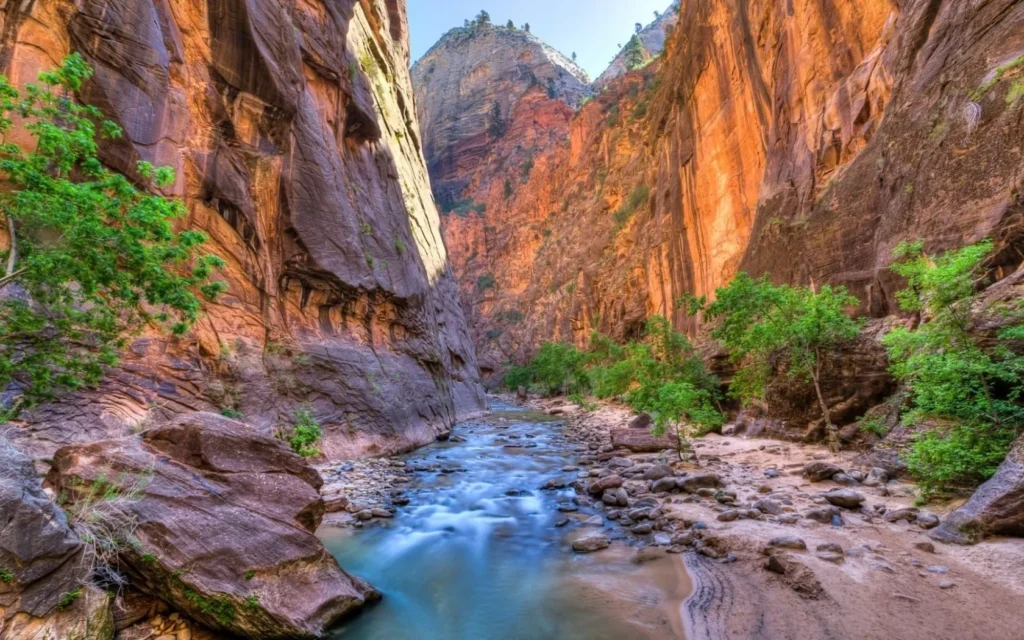
As summer transitions to fall, Zion National Park undergoes a remarkable metamorphosis, showcasing nature’s breathtaking display of color and beauty. The landscape comes alive with a kaleidoscope of autumn hues, as the leaves of cottonwoods, maples, and oaks blaze with fiery tones against the backdrop of towering sandstone cliffs.
The magic of fall in Zion lies not only in its stunning visual transformation but also in the comfortable weather that accompanies it. The scorching heat of summer gives way to milder temperatures, creating ideal conditions for outdoor exploration. The crisp, refreshing air invigorates the senses, beckoning adventurers to embark on hiking trails that wind through canyons adorned with the golden glow of autumn foliage.
Photographers flock to Zion during the fall months, eager to capture the ethereal beauty of the changing seasons. From sunrise to sunset, the soft light of autumn bathes the landscape in a warm, golden glow, creating enchanting scenes that beg to be immortalized through the lens of a camera. Whether framing the iconic silhouettes of rock formations against a backdrop of colorful leaves or capturing the reflections of towering cliffs in tranquil streams, the opportunities for stunning photography are endless.
For camping enthusiasts, fall offers a chance to experience Zion’s natural wonders in a more serene and intimate setting. Campgrounds nestled amidst groves of cottonwood trees provide a cozy retreat, while clear nights offer unparalleled stargazing opportunities beneath the vast desert sky.
As the days grow shorter and the air carries a hint of winter’s approach, fall in Zion National Park serves as a reminder of nature’s boundless beauty and the timeless rhythms of the changing seasons. Whether hiking along scenic trails, capturing the grandeur of fall foliage through the lens of a camera or simply immersing oneself in the peacefulness of the wilderness, autumn in Zion promises an unforgettable journey through one of America’s most iconic national parks.
Zion National Park in Winter
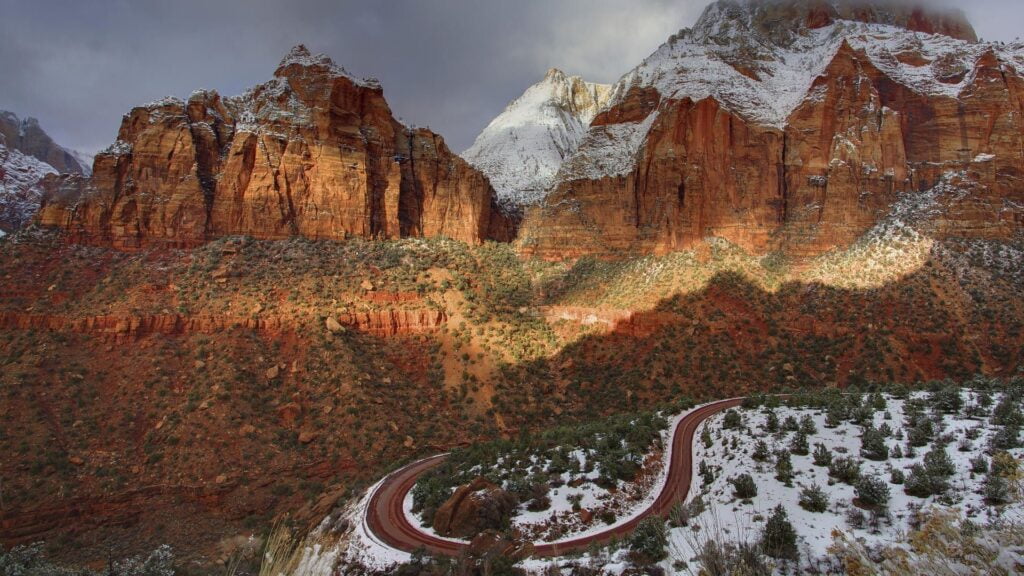
Winter blankets Zion National Park in a tranquil shroud of snow, enveloping the landscape in a serene and picturesque atmosphere. The majestic peaks stand adorned with delicate white caps, while frost delicately traces the contours of the terrain, creating a scene straight out of a winter wonderland. Despite the hushed ambiance, Zion remains a haven for adventure and exploration during the colder months, offering visitors a unique and memorable experience amidst the snowy splendor.
While some trails may be temporarily closed due to snow and ice, there are still plenty of opportunities for outdoor recreation in Zion during the winter season. Hiking enthusiasts can embark on snow-dusted trails, immersing themselves in the quiet beauty of the winter landscape. With fewer crowds to contend with, winter hikers can enjoy a more solitary and contemplative experience, and be amazed at the park’s natural wonders in solitude.
Wildlife viewing takes on a special allure in winter, as animals adapt to the changing conditions and reveal themselves against the snowy backdrop. Keep an eye out for elusive creatures such as bighorn sheep, mule deer, and mountain lions, whose tracks crisscross the pristine snow-covered terrain.
For those seeking a more leisurely pursuit, winter in Zion offers the perfect opportunity for peaceful contemplation and reflection amidst the park’s tranquil surroundings. Bundle up in warm layers and find a cozy spot to watch the sunrise over the snow-capped peaks, or simply wander along quiet pathways, taking in the beauty of the frost-covered landscape.
As the day draws to a close, gather around a crackling campfire or retreat to a rustic cabin, where you can unwind and recount the day’s adventures with friends and loved ones. Whether you’re exploring snow-draped trails, observing wildlife against a backdrop of winter scenery, or simply enjoying the peace of the winter landscape, Zion National Park offers a truly unforgettable experience for winter adventurers of all ages.
The Best Time To Hike in Zion National Park
For hiking enthusiasts, the best time to visit Zion National Park is during the spring and fall seasons when temperatures are mild, and the trails are less crowded.
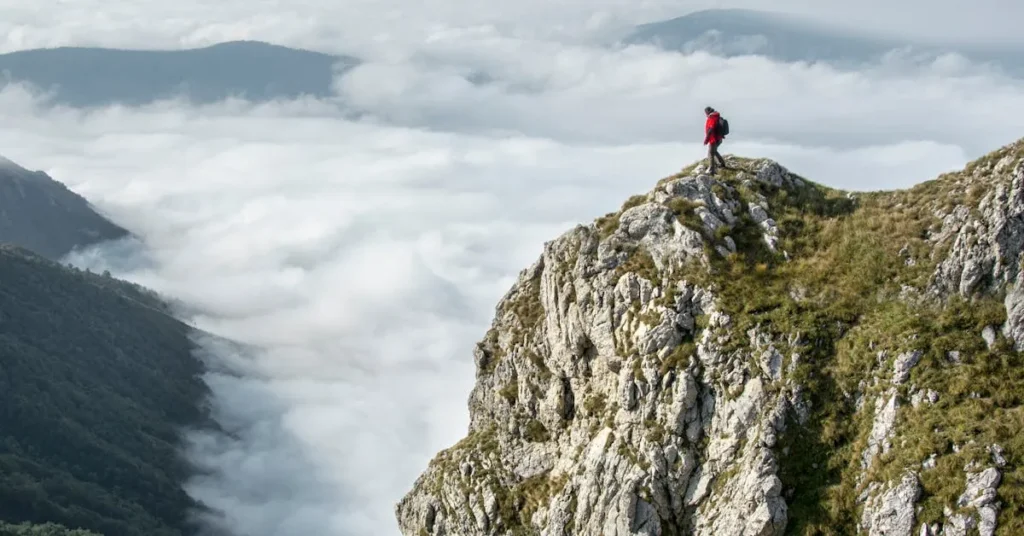
A. Peak hiking season
Spring and fall are considered the peak hiking seasons at Zion National Park, with comfortable temperatures and stunning landscapes.
B. Recommended trails for each season
Choose trails that suit your preferences and fitness level, taking into account factors such as elevation gain, trail length, and difficulty.
C. Tips for hiking in different weather conditions
Be prepared for changing weather conditions by wearing layers and carrying essentials such as water, sunscreen, and a first-aid kit.
Factors to Consider When trip to Zion National Park
When planning your trip to Zion National Park, several factors should be taken into account to ensure a memorable experience:
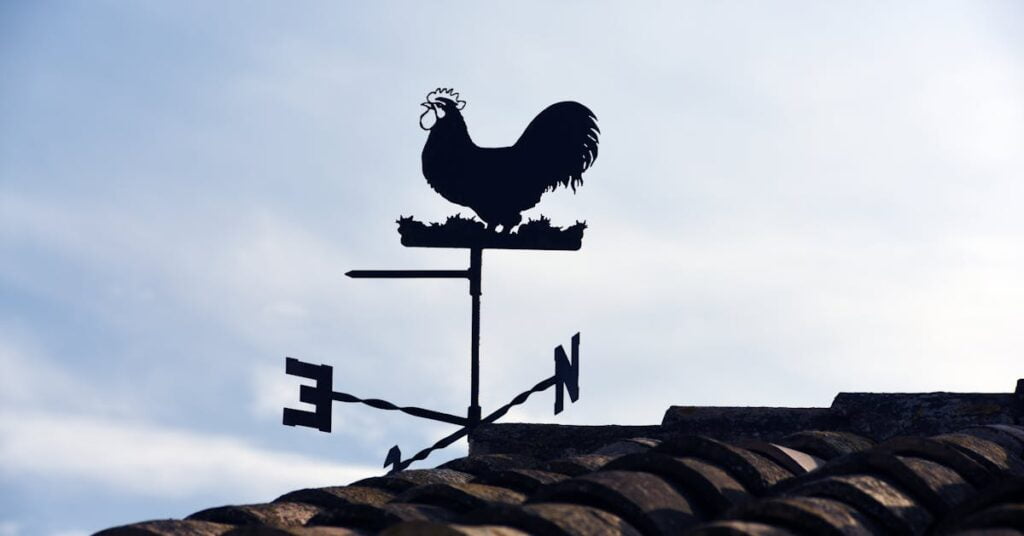
A. Weather Zion National Park
Check the weather forecast before your visit and pack accordingly, especially if you plan to engage in outdoor activities.
B. Crowds and peak seasons
Avoid the peak summer months if possible and consider visiting during the shoulder seasons for a more relaxed experience.
C. Wildlife viewing opportunities
Keep an eye out for native wildlife such as bighorn sheep, mule deer, and golden eagles, especially during the early morning and late evening hours.
D. Activities available during each season
Research the activities available during your visit, including hiking, rock climbing, photography, and ranger-led programs.
Zion National Park Photography Opportunities Throughout the Year
Zion National Park offers unparalleled photography opportunities year-round, from majestic sunrises and sunsets to dramatic landscapes and wildlife encounters.
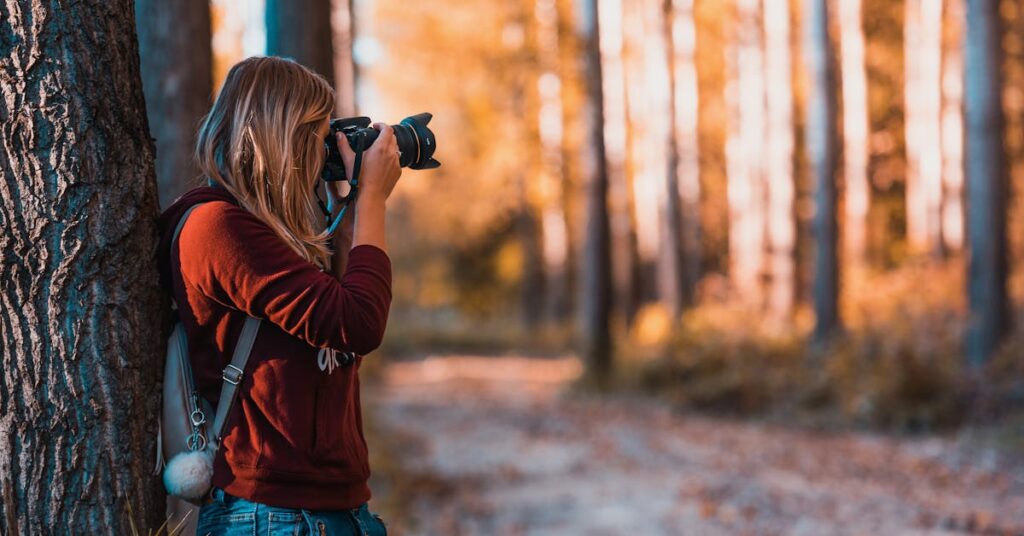
A. Scenic viewpoints and landscapes
Capture the beauty of Zion’s iconic landmarks such as Angel’s Landing, The Narrows, and Observation Point from various vantage points.
B. Wildlife photography
Patience is key when photographing wildlife at Zion National Park, so be prepared to wait quietly and observe their natural behavior.
C. Sunrise and sunset photography
Plan your photography outings around sunrise and sunset to capture the park’s stunning colors and atmospheric lighting.
Special Events and Festivals in Zion National Park
Throughout the year, Zion National Park hosts a variety of special events and festivals that celebrate its natural and cultural heritage.

A. Annual events at Zion National Park
Attend ranger-led programs, guided hikes, and educational workshops to learn more about the park’s history, geology, and ecology.
B. Cultural festivals and celebrations
Experience the rich cultural traditions of the Native American tribes who have called Zion National Park home for thousands of years.
C. Impact on crowds and accommodation availability
Check the park’s event calendar and make reservations well in advance if you plan to visit during a special event or festival.
Accommodation and best camping in Zion National Park
Whether you prefer camping under the stars or staying in comfortable lodges, Zion National Park offers a range of accommodation options to suit every budget and preference.
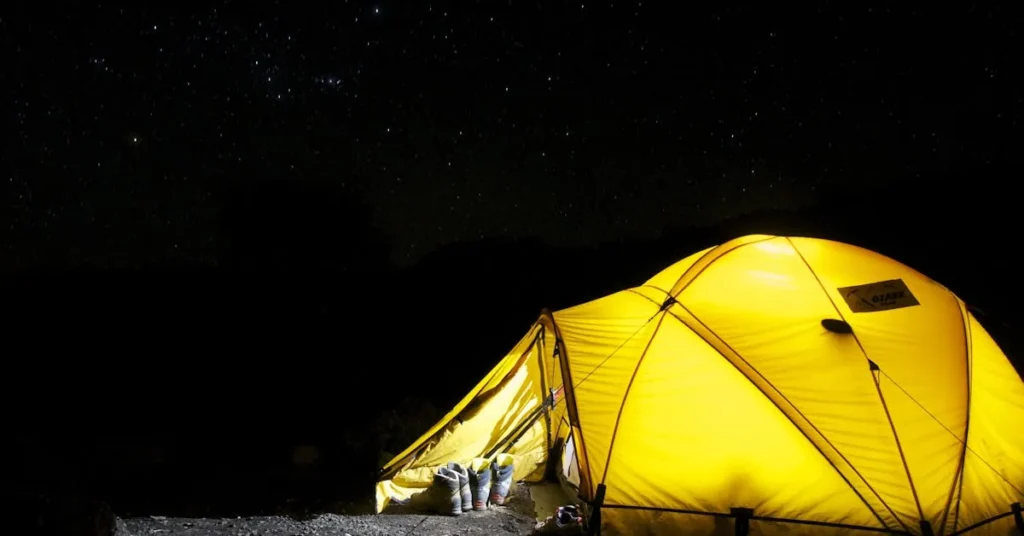
A. Availability of campsites
Reserve campsites in advance, especially during the peak summer months when demand is high.
B. Lodging options in and around the park
Choose from a variety of lodging options including campgrounds, cabins, hotels, and vacation rentals located both inside and outside the park.
C. Reservation tips for peak seasons
Book accommodation well in advance, especially if you plan to visit during holidays or peak travel periods.Tips for Beating the Crowds
Tips for Beating the Crowds
To avoid the crowds and make the most of your visit to Zion National Park, consider the following tips:
- Lesser-known trails and viewpoints: Explore off-the-beaten-path trails and viewpoints to escape the crowds and discover hidden gems.
- Early morning and late afternoon visits: Visit popular attractions during off-peak hours to enjoy them without the crowds and harsh midday sun.
- Mid-week vs. weekend visits: Plan your visit for mid-week days when the park is typically less crowded compared to weekends and holidays.
Weather Patterns and Climate Variability
While Zion National Park enjoys a relatively mild climate year-round, weather patterns can vary significantly depending on the season and elevation.
- Typical weather conditions for each season: Expect hot and dry summers, mild and pleasant springs and falls, and cold and snowy winters at Zion National Park.
- Unpredictable weather events and their impact: Be prepared for sudden changes in weather, including thunderstorms, flash floods, and temperature fluctuations.
- Safety precautions during extreme weather: Follow park guidelines and safety recommendations during extreme weather events to ensure your safety and well-being.
Weather in Zion National Park 10 days
The 10-day forecast weather report in Zion National Park. CLICK HERE
Frequently Asked Questions
Airport for Zion National Park
The closest airport to Zion National Park is St. George Regional Airport in Utah, only 45 minutes away. Flying into McCarran International Airport in Las Vegas, Nevada, is another option, but it adds over 2 hours of travel time.
How many days for Zion National Park
Zion National Park is small, so spending 2 to 3 days here on a road trip or weekend getaway is enough. However, the park is so stunning and special that you can stay as long as you want.
Do I need a reservation for Zion National Park?
No tickets or reservations are required to ride the park shuttle or enter Zion National Park. You also don’t need a permit or reservation for most areas in Zion Canyon. However, you do need to pay the parking fee. Additionally, no permit is needed to hike the Narrows from the Temple of Sinawava going upstream in the Virgin River, but be aware that high water levels may affect access, so check the park’s current conditions before starting your day.
How far is Zion National Park from Las Vegas?
The distance from Las Vegas to Zion National Park is nearly 150 miles, and it takes approximately two and a half hours by road.
what to do in zion national park
You can do a lot of things Backpacking, camping, trekking, Biking, Canyoneering, photography, and a lot more…

